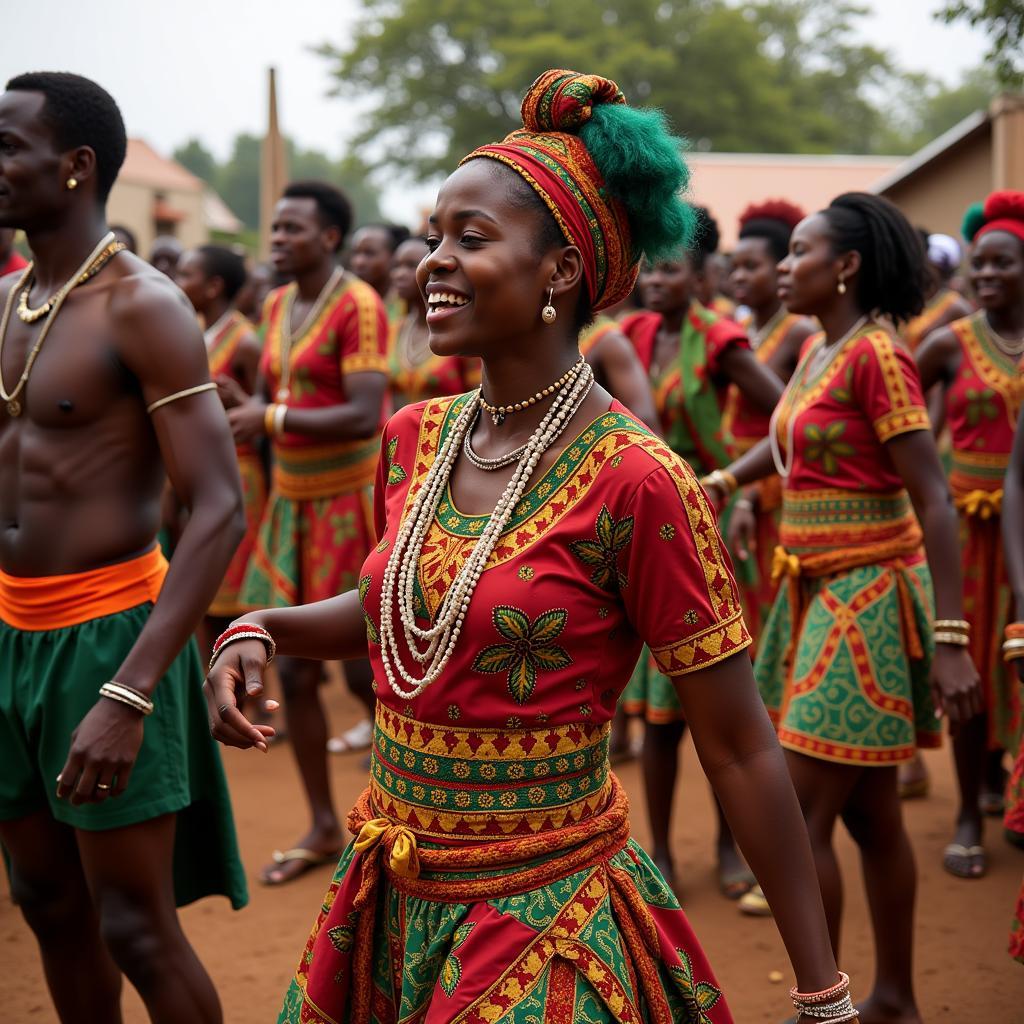Exploring African Diaspora Modernism: A Journey of Identity and Artistic Expression
The African diaspora, a term that encompasses the global scattering of people of African descent, has played a pivotal role in shaping modern art and culture. From the Harlem Renaissance to contemporary artistic movements, the influence of African traditions and experiences has left an indelible mark on the world. This essay explores the fascinating concept of African Diaspora Modernism, examining its origins, key characteristics, and enduring legacy.
The Seeds of a Movement: Tracing the Roots of African Diaspora Modernism
African diaspora modernism can be traced back to the early 20th century, a period marked by significant societal shifts and cultural awakening. The end of colonialism and the rise of civil rights movements in the Americas and Europe fostered a sense of empowerment and identity among African diasporic communities.
These communities, often facing systemic racism and discrimination, began to reclaim their heritage and explore new avenues of artistic expression. This quest for self-representation and cultural validation led to the emergence of a distinctive style, characterized by a fusion of African traditions with modern aesthetics.
Embracing Africanity: The Key Characteristics of African Diaspora Modernism
African diaspora modernism is defined by its celebration of Africanity and its deliberate engagement with the complexities of diasporic experiences. This movement encompasses diverse artistic expressions, including:
- Visual Arts: African diaspora artists often utilize vibrant colors, geometric patterns, and bold textures to evoke the richness and vibrancy of African cultures. They also frequently incorporate symbols and imagery that reflect their own cultural heritage, such as masks, textiles, and traditional motifs.
- Literature: Diaspora writers explore themes of identity, displacement, and the search for belonging. They often use their work to challenge colonial narratives and offer alternative perspectives on African history and experiences.
- Music: From jazz to Afrobeat, African diaspora music blends traditional rhythms and melodies with contemporary Western influences. This fusion creates a unique soundscape that reflects the hybridity of diasporic cultures.
A Legacy of Influence: The Enduring Impact of African Diaspora Modernism
African diaspora modernism continues to inspire and shape contemporary art and culture. Its influence can be seen in:
- The Global Rise of Afrofuturism: A genre of speculative fiction that reimagines African history and culture in futuristic contexts, often borrowing from African mythology and folklore.
- The Recognition of Black Art History: Museums and galleries are increasingly dedicating space to showcasing the work of African diaspora artists, challenging traditional art historical narratives.
- The Empowerment of Black Artists: African diaspora artists are using their platforms to amplify Black voices and challenge social inequalities.
“The beauty of African diaspora modernism lies in its ability to bridge the gap between the past and present, celebrating both heritage and innovation.” – Dr. Amina Omar, Art Historian and Curator
The Future of African Diaspora Modernism
African diaspora modernism is not a fixed entity but a constantly evolving movement. As the world becomes increasingly interconnected, this movement is likely to continue to evolve, incorporating new influences and responding to contemporary challenges. It will undoubtedly continue to serve as a powerful force for cultural exchange, artistic innovation, and social change.
Frequently Asked Questions (FAQs)
1. What are some notable examples of African diaspora modernism?
Some notable examples include the work of artists like W.E.B. Du Bois, Langston Hughes, and Zora Neale Hurston during the Harlem Renaissance. In contemporary art, artists like Kara Walker, Theaster Gates, and Lorna Simpson continue to explore the complexities of African diaspora identity.
2. How has African diaspora modernism influenced contemporary art?
Its influence can be seen in the increased representation of Black artists in museums and galleries, the rise of Afrofuturism, and the growing recognition of the importance of Black art history.
3. What are some of the challenges facing African diaspora modernism?
Challenges include the need to address ongoing issues of racial inequality and the fight for greater recognition and representation within the art world.
4. What are some resources for learning more about African diaspora modernism?
There are numerous online resources, including museums, galleries, and academic journals that offer insightful information about African diaspora modernism.
5. How can I support African diaspora artists?
You can support African diaspora artists by attending their exhibitions, purchasing their work, and engaging with their art online.
African diaspora modernism is a vital force in contemporary art and culture. Its legacy of artistic innovation and cultural empowerment continues to inspire and shape the world.



